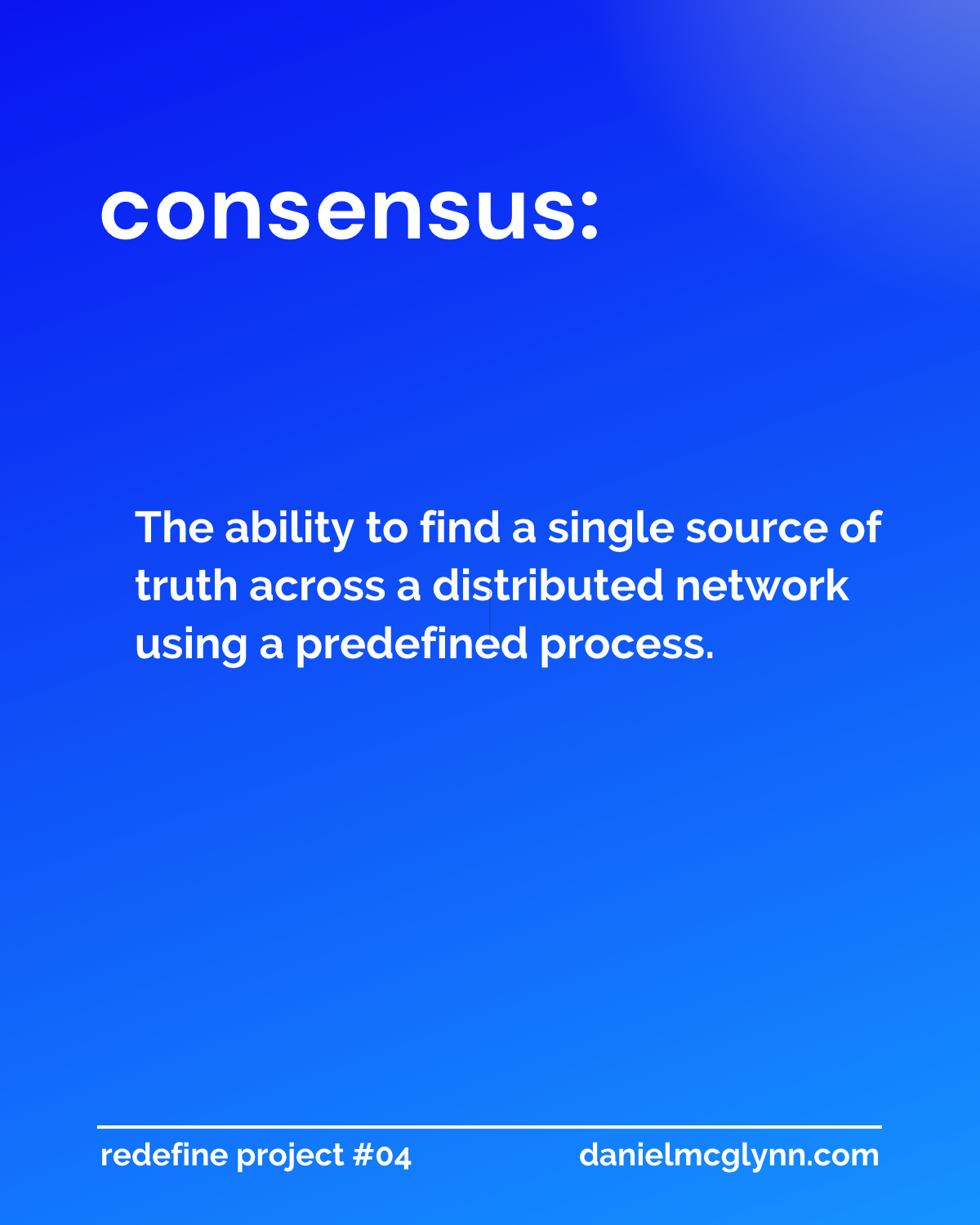The ability to reach consensus — or agreement — without the need for an official third-party is the whole point of why blockchains exist.
Blockchain is such an important innovation because it allows people to coordinate, organize, and transact in a peer-to-peer way but with the network effects and at internet scale.

Consensus in the blockchain industry is also called consensus mechanism or consensus algorithm.
There are a number of ways to achieve consensus across a distributed network.
Bitcoin uses proof-of-work (or intensive computation) as a means to arrive at agreement and confirm transactions to its blockchain.
Ethereum uses proof-of-stake (or intensive capital allocation) as a means to select and enforce a system of validations across its network.
There are other kinds of consensus and they all come with their own costs (general in terms of speed and resource input) and security trade-offs (proof-of-work is arguably more secure than proof-of-stake, but requires specialized equipment to work).
Zooming out, the ability to arrive at a consensus — and say “this is what happened and this is when it happened” without huge bureaucracies, governments, or corporations acting as the middleman is huge in terms of forward progress.
At scale, blockchain-based consensus will change, or at least give a real alternative, to traditional power structures.